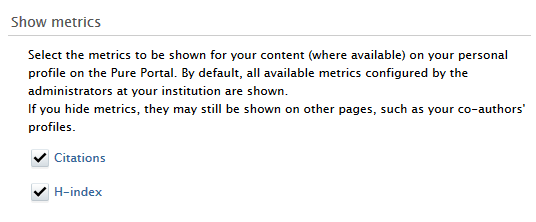You may notice that the H-index in your Pure profile shows a different number to the one on Google Scholar. Here we explain why…

What is the h-index?
The H-index is a measure to show a researcher’s productivity and impact. Although convenient as an assessment tool, it has received valid criticism because it favours older, male academics and assumes ‘citations = impact’, when it has been shown that the practice can be manipulated.
As an academic at Edge Hill University, your Pure profile will display your H-index by default (see above image). This though, can show a different number to the H-index displayed in a Google Scholar profile. Here is the same author’s h-index in Google Scholar:

This shows the total h-index to be 49, so 13 points higher than the number quoted in Pure.
Why the difference?
The reason for the difference is that the figure in Pure is taken from Scopus, not Google Scholar. H-index numbers are lower in Scopus compared with Scholar because there is less content – Scopus has around 43 million items, whereas Scholar has been estimated to include around 300 million – far more than any other database. This doesn’t make Scopus an inferior source, it indexes high quality journals admitted on the basis of merit, whereas Scholar uses a powerful algorithm to pull in anything it can find on the web that ‘looks’ academic. This includes dissertations, theses, and some poor or even so-called ‘predatory’ journals.
Why use the number from Scopus?
On a practical basis, Scopus is used because both it and Pure are Elsevier products, and as such can exchange data. Google Scholar however, does not share such data with other platforms.
What should I do?
If you don’t want to display your Scopus h-index, you edit the setting and do this. Go to: edit profile > Portal Profile > untick the box.

For more information please contact Liam Bullingham, Research Support Librarian: [email protected]
